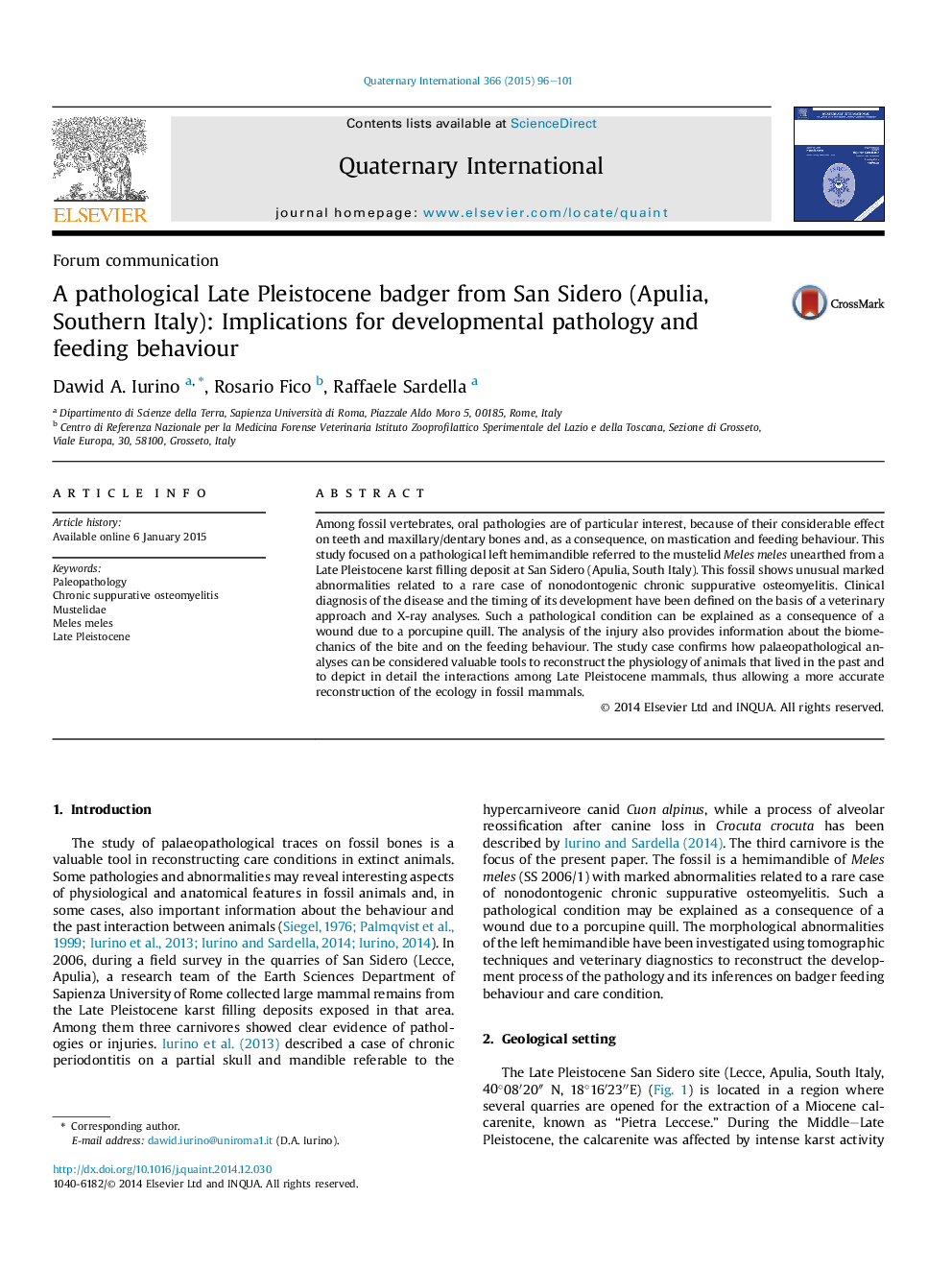| Article ID | Journal | Published Year | Pages | File Type |
|---|---|---|---|---|
| 1040827 | Quaternary International | 2015 | 6 Pages |
Among fossil vertebrates, oral pathologies are of particular interest, because of their considerable effect on teeth and maxillary/dentary bones and, as a consequence, on mastication and feeding behaviour. This study focused on a pathological left hemimandible referred to the mustelid Meles meles unearthed from a Late Pleistocene karst filling deposit at San Sidero (Apulia, South Italy). This fossil shows unusual marked abnormalities related to a rare case of nonodontogenic chronic suppurative osteomyelitis. Clinical diagnosis of the disease and the timing of its development have been defined on the basis of a veterinary approach and X-ray analyses. Such a pathological condition can be explained as a consequence of a wound due to a porcupine quill. The analysis of the injury also provides information about the biomechanics of the bite and on the feeding behaviour. The study case confirms how palaeopathological analyses can be considered valuable tools to reconstruct the physiology of animals that lived in the past and to depict in detail the interactions among Late Pleistocene mammals, thus allowing a more accurate reconstruction of the ecology in fossil mammals.
